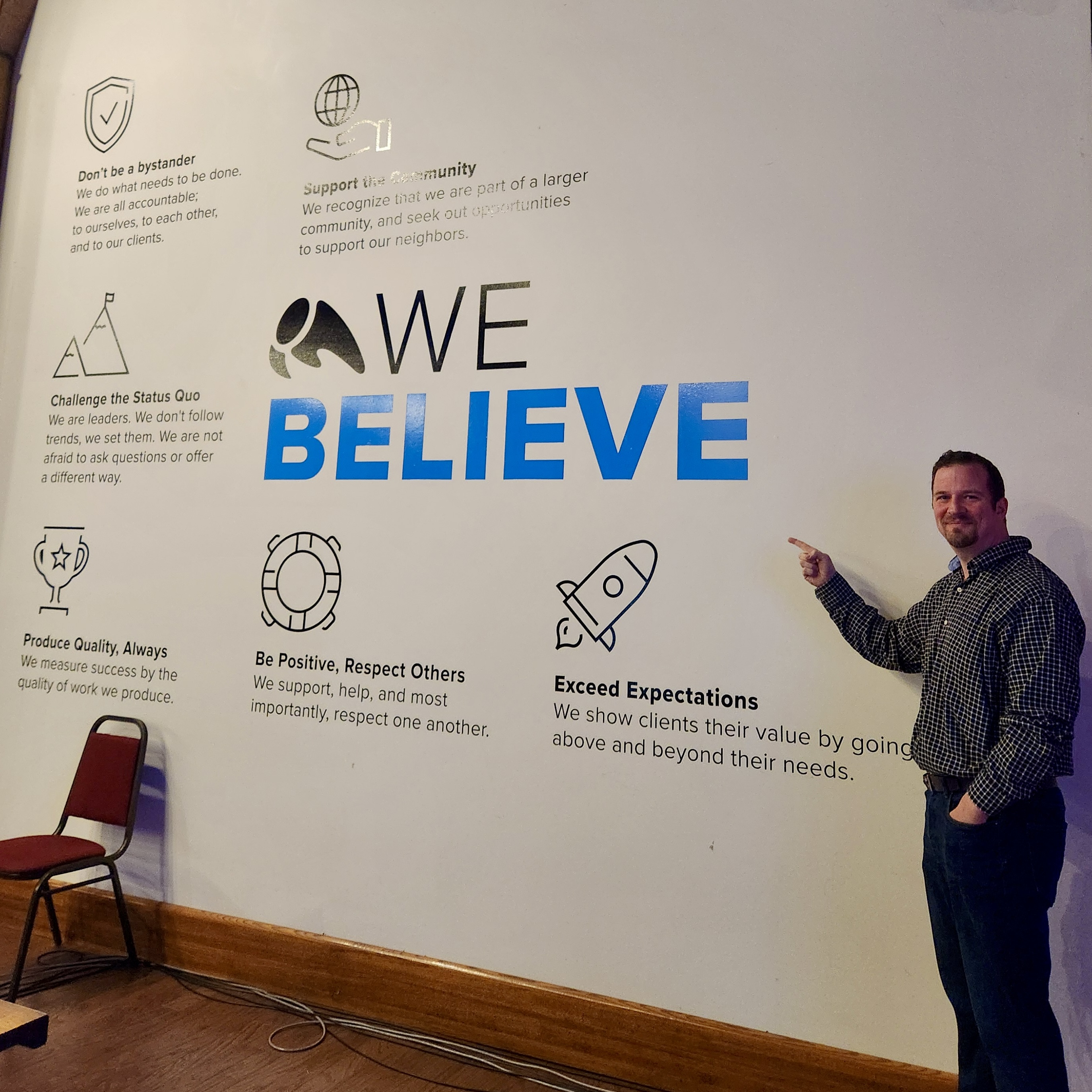
Powered by RedCircle
It’s that time of the year again, folks: it’s March Madness time!
Right around now, we should be getting down to the final “Sweet 16” teams in the men’s and women’s NCAA basketball tournaments, which means there’s already been a lot of busted brackets but also some great stories, like #11 seed North Carolina State making it out of the first 2 rounds of play.
I personally love March Madness every year, because it represents the unique intersection of everything I’m passionate about: sports, data and analytics, marketing, and storytelling. I originally intended to write down a few pieces of wisdom for a blog post, but there was so much to say that we decided to split it into TWO blog posts.
Inspired by all that March Madness has to offer, here are Overit’s “Sweet 16” lessons from March Madness for Marketing, Analytics, and Life – grouped together by a few recurring March Madness themes. Read Part 2 here.
March Madness Basics:
Lesson #1: Connect to your audience across multiple channels.
When it comes to marketing, I’m jealous of the NCAA every March. They make it seem all so easy. So connected. The TV broadcasts, the digital streams, the Twitter/X threads, the highlight videos, the bracket pools. Everything coalesces into one massive national dialogue, the ultimate month-long water cooler talk. While some college football diehards might balk, I’d argue that March Madness is marketing at its best. The entire country is connected together, and it feels like if you blink you might miss the next beat in that greater conversation.
It’s an inspiration and lesson for marketers everywhere: don’t go all in on just one or two things. Diversify. Leverage multiple channels and platforms to engage your core audiences in multiple places. Strategize how they can work together, amplify each other, and avoid messaging silos.
Tip: Conduct annual audits of your marketing channel mix. Identify ones you’re not using but could or should, and ones you might be becoming a bit too reliant on.
Lesson #2: The Davids CAN compete with the Goliaths…
This is March Madness, baby! If there’s any time of the year where we collectively celebrate and elevate the underdog, it’s now. Go through the annals of March Madness history and you’ll find some of the greatest upsets in sports history. Pick your favorite. For me, it’s UMBC vs Virginia in 2018, 1st Round. UMBC were 20-point underdogs but won by 20, becoming the first #16 seed ever to beat a #1 seed.
For marketers that work with smaller brands and organizations, this should remind us that while we may lack the budget or resources of the Big Brands, that doesn’t mean we still can’t compete with them… and even win! It wasn’t too many years ago that right in Overit’s backyard, a local coffee roaster nobody had ever heard of won a chance at a national Super Bowl spot. Today, that “local roaster,” Death Wish Coffee, generates 8 figures in annual revenue and is found in grocery stores across the country, making them one of the top private-label coffee brands.
Lesson #3: …BUT only if they leverage their genuine strengths.
For the Davids to BEAT the Goliaths, however, they can’t just copy what the Goliaths do. They need to stay true to themselves and leverage their unique strengths and what truly sets them apart. For UMBC, that meant trusting their Senior guards and finding open 3-point attempts. They made 50% of their 3-pointers on 24 attempts that game, an excellent rate. Virginia tried to keep pace with 22 of their own 3-point attempts, but they made just 4 of them. The rest was history.
For Death Wish, competing with Big Coffee meant Brand, Brand, and more Brand! From their industry-leading caffeine levels, to their packaging graphics, to their very name – everything about Death Wish Coffee projects a certain vibe, a certain aesthetic. They know who they are and who they are not, and they’re more than comfortable with both. This ain’t your grandpa’s Folgers. That lets them pick their battles and win on battlefronts that they choose, rather than letting the Goliaths set those terms. March Madness is your annual reminder to be yourself and find your organizational “true north”.
On Organizations & Culture:
Lesson #4: Cultures are what sustain success, not talent alone
If you look at what makes the “Blue Blood” programs like Duke and Kentucky perennial contenders every year, it’s their cultures. Yes, both programs have had their share of star players and they continually recruit some of the very best players every year. But they also recognize that any one player is ultimately replaceable and that what sustains success over the long run is a consistent CULTURE. Talent is important, yes, but it’s not everything. Even smaller organizations can thrive and WIN when they nail down the Culture.
Tip: Incorporate your company culture into everything you do, particularly your marketing. Here at Overit, we literally painted our Core Values on our walls!

Lesson #5: Practice, Practice, Practice!
Part of what shapes an organization’s culture is how and what they practice. For basketball teams, these are the routine plays they have to first perfect in practice before executing in the game. For marketing teams, that means Standard Operating Procedures (SOPs). While these types of documents aren’t always fun or glamorous, they lay out clear expectations and standards for how different types of work get done. This might be content or brand standards, SEO best practices, bidding strategies for paid advertising, or other areas of marketing operations. When everyone is on the same page, it leads to more consistent and repeatable results. And that’s a big part of what a culture really is: a set of repeatable practices and their desired results.
Tip: Audit your marketing SOPs every year and refresh them as needed. If you don’t have SOPs, start identifying which areas need them the most and focus there.
Lesson #6: Resilience is a Behavior, not a Trait
Winning and success are great, but another hallmark of an organization’s culture is how it handles adversity. Setbacks are a part of sports, business, and life. Marketers know this all too well. You finally build up an organic audience, just for that social media platform to suddenly throttle down your reach. The CPCs and CPMs for paid channels creep up and up every year, cutting into precious budgets. There’s a large search engine update and now you’re suddenly losing rankings and traffic. How organizations handle setbacks speaks volumes about their overall culture and character.
Resilience, though, is best understood as what you DO, not necessarily what you ARE. While some folks are naturally more resilient than others, that’s not to say we can’t all improve our resilience if we view it as a set of behaviors rather than an innate trait that we either do or don’t have. We can’t always control events, but we can control how we react to them. Psychologists call this “sense of agency” and high-agency beliefs strongly correlate with lifetime success, longevity, and happiness. Those with high agency know their efforts have an influence on outcomes, and they are more deliberate in those efforts precisely because of that belief.
Tip: Foster behaviors and mindsets that promote resilience and high-agency in your organization, and when times get tough, overcoming them gets easier.
On Data and Analytics:
Lesson #7: Attribution is HARD, and that’s OK. Try your best anyway.
In certain sports, it’s easier to quantify the contributions of single players more than others. In baseball, if you hit a home run or strikeout, that’s entirely on YOU. But in basketball, perhaps the ultimate team sport, it’s much harder to isolate and measure individual contributions. Say a player shoots a wide open 3-pointer. On the surface, you might attribute those points to that one player. But what about the pass from his double-teamed teammate that found him open? What about the perfectly set screen that led to a defensive mismatch, CAUSING the double-team? In a game where all 5 players move independently of one another and have to transition between both offensive and defensive roles, it’s much harder to isolate individual performance with the degree of certainty that we might prefer.
In marketing, we often see the same problem with multi-channel campaigns and strategies. Most customer journeys these days are multi-touchpoint. Potential leads might find us on a Google search, then visit our social profiles, and then later visit our website directly before finally converting. Who gets credit here?
First-click attribution, last-click attribution, time decayed, or linear-based attributions are all different methodologies organizations use to attribute results to marketing efforts and investments. None of them are necessarily better or more correct than the others. But organizations need to consider the different attribution models available to them and decide which one makes the most sense for them.
Tip: If you leverage multi-channel marketing, check out the Advertising section within GA4, and look for the Conversion Paths report. You’ll see which channels are “always hustling” for early, mid, and late touch points in customer journeys. Understanding the Big Picture, analytically, is more valuable than 100% certainty on individual channel performance.
Lesson #8: Pay attention to Leading Indicators, not just Lagging Ones
In sports and in marketing, there are two broad types of Key Performance Indicators (KPIs): leading indicators and lagging ones. The former are data points that occur earlier or “upstream”, while the latter occur later or “downstream”. Wins or losses, for example, are the ultimate lagging indicators. They are the final result, an outcome. Their value is more descriptive than anything. They tell you WHAT happened, but not WHY or HOW. They offer little insight into what changes are needed if the results don’t match expectations. Even metrics like points themselves are outcomes: the END of a chain of events, a series of plays, not the beginning or middle of them.
In marketing and business, sales and revenue function the same way: they’re lagging indicators downstream from other data points that might offer more prescriptive value. The reason we obsess so much over outcome-based metrics is they are frankly, typically easier to measure. Leading indicators are often much harder to identify, isolate and/or consistently measure, which is why they often receive less attention. But what they lack in ease of measurement, they make up for in greater predictive capabilities, and more critically: actionable insights.
For basketball, leading indicators that don’t just point at the scoreboard include: turnover rate, rebound totals, free throw completions, and time of possession. None of these leading indicators guarantee wins or losses, but they highly correlate to both. They highlight areas of opportunity that remain actionable BEFORE the final outcome. If turnovers are a key problem, coaches can address that in-game, before it’s too late.
Similarly, marketers should turn to leading indicators if they are looking for more actionable insights. Before an e-commerce sale, a customer needs to add something to their cart. Before that, they need to visit the website, perhaps from a Google search. Before that, they need to find the website among the Google search results. The website’s keyword ranking for that search term is a leading indicator, the sales are lagging ones. In many paid digital campaigns, Impression Share or Quality Scores are other strong leading indicators. Stronger or weaker performance in leading indicators is generally predictive of final campaign performance. More importantly, they occur before outcomes are settled, when there is still time to make key changes.
Tip: For each main marketing channel in your mix, distinguish between the leading and lagging KPIs for success in that channel. Pay just as much attention, if not more, to the leading indicators than the lagging ones.
That’s it for Part 1! Read the next eight lessons in Part 2!







